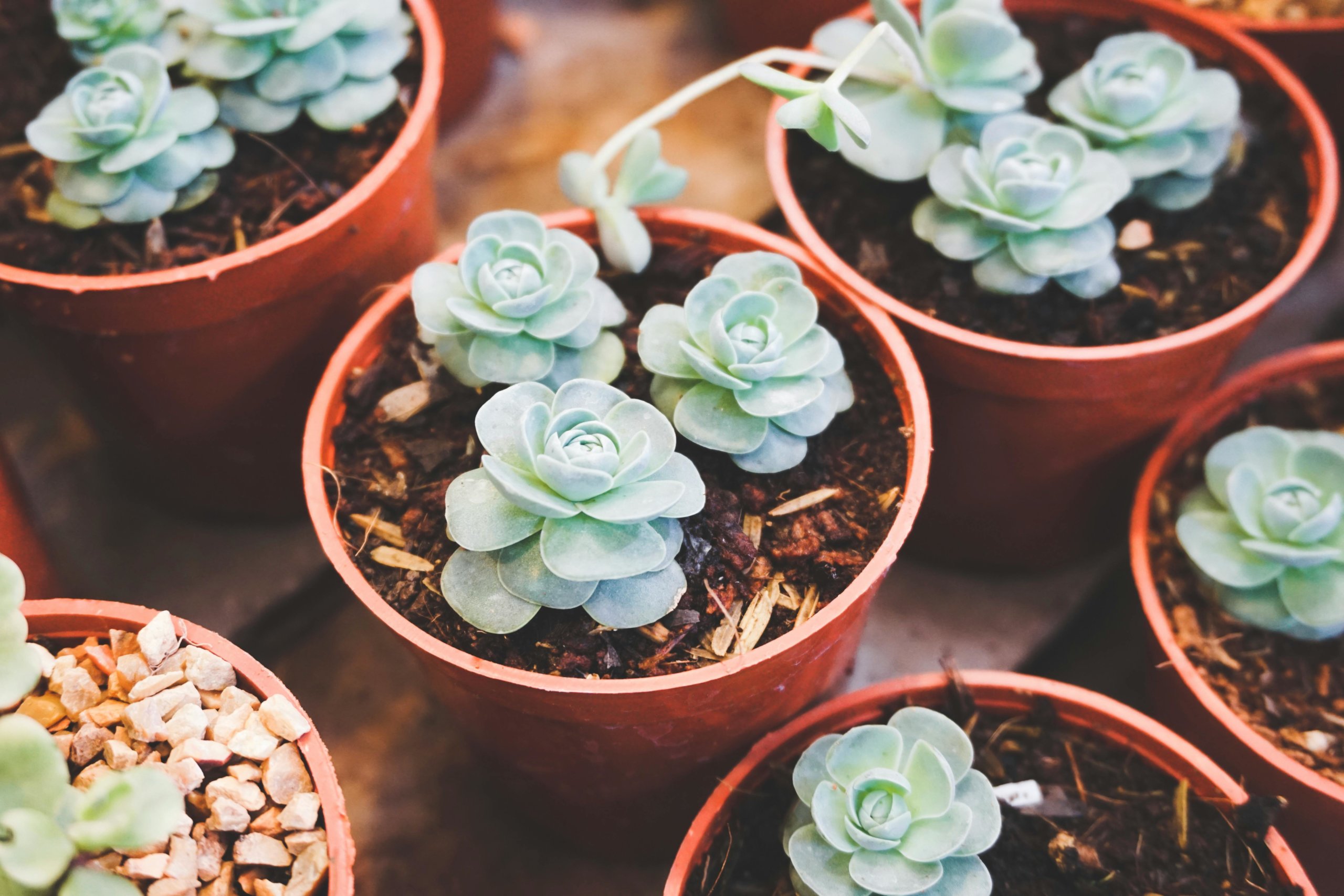Best Containers for Succulent Propagation
The best containers for succulent propagation are shallow pots or trays with drainage holes, made from materials like terra cotta or plastic. These containers give your succulent cuttings the airflow and moisture control they need to develop healthy roots. A container that drains well helps prevent problems like root rot and mold, which are common when growing succulent plants indoors.
When propagating succulents, you want to make sure your houseplants get the right mix of air and moisture at their base. Small, individual pots work for single cuttings, while seedling trays or shallow dishes are great for starting many at once. With the right container, your succulents will have the best chance to root and thrive.
Essential Factors for Choosing Containers for Succulent Propagation
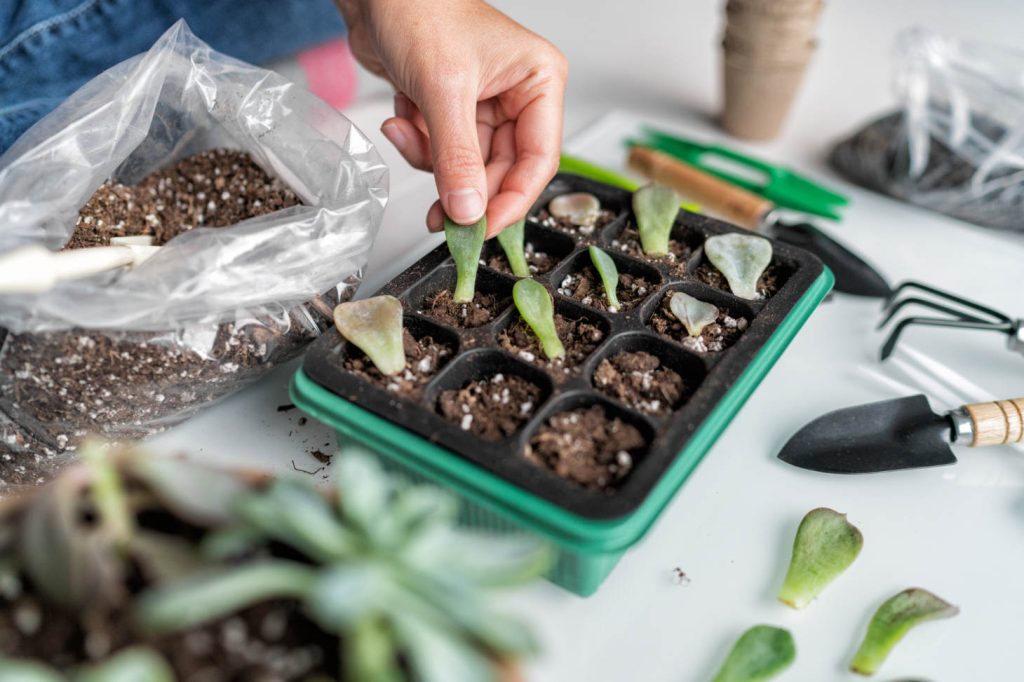
Choosing the right container helps your succulent cuttings thrive. Key details include making sure water can escape, using a good soil mix, and not choosing a pot that is too big or too small.
Importance of Drainage Holes
Drainage holes are vital for healthy succulents.
Succulent roots are sensitive to too much water. Without holes, water can sit at the bottom of the pot and cause root rot. Always pick containers with at least one drainage hole at the bottom. If you are reusing a container that does not have holes, you may need to drill some yourself.
Common container types with drainage:
- Terracotta pots
- Plastic nursery pots
- Ceramic pots with pre-made holes
Avoid decorative pots that lack drainage unless you use them as a cover for a smaller inner pot that has holes. Good drainage ensures your cuttings develop strong, healthy roots.
Proper Size and Depth
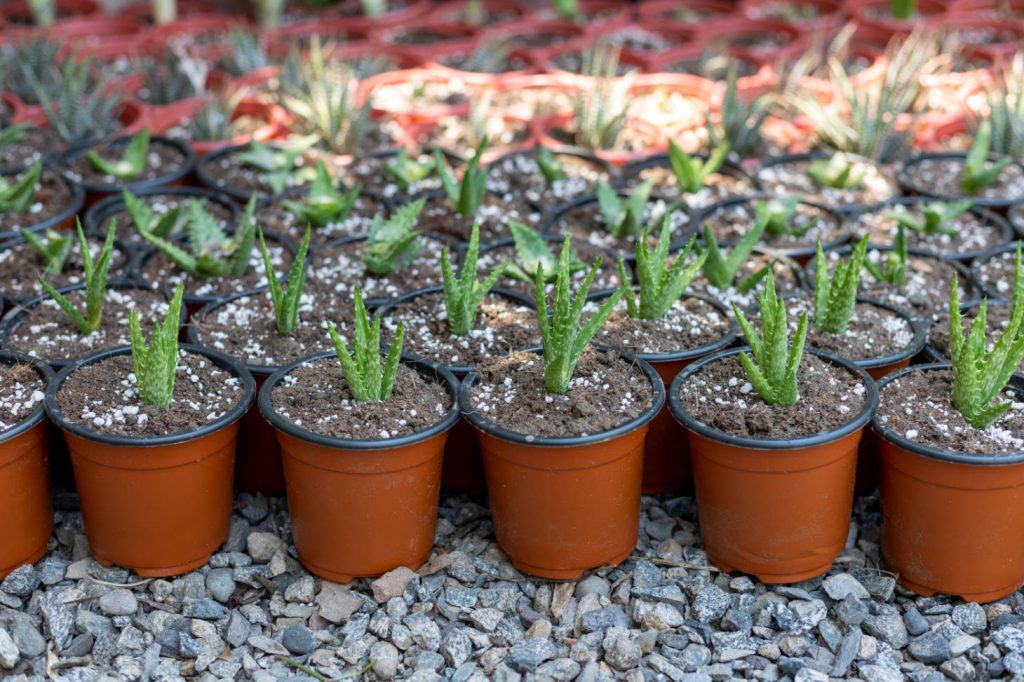
The size and depth of your container play a big role in propagation success.
A shallow pot is usually best for starting succulent cuttings. Shallow pots dry out faster, which is good for preventing rot. When propagating, use a container only slightly larger than the group of leaves or cuttings you plan to root. Too much space can cause soil to stay damp.
Stick to pots that are around 2–4 inches deep. This size gives roots room to spread but doesn’t hold extra moisture. If you are rooting many cuttings together, use a tray or flat with drainage, giving each leaf space and air.
Ideal Potting Mix for Succulents
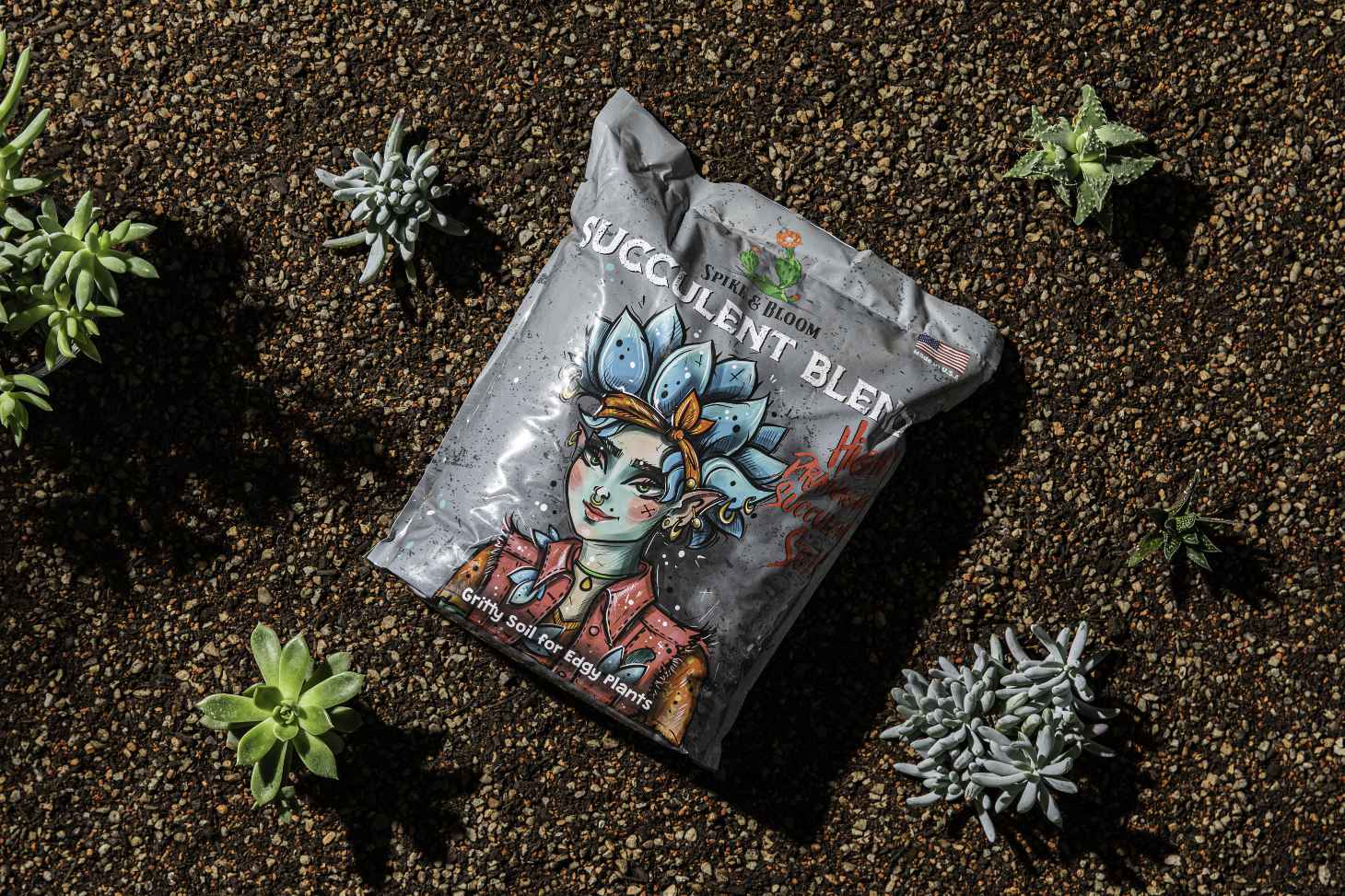
A proper succulent mix is just as important as choosing the right pot.
Succulent potting mix should be fast-draining and gritty. Special mixes labeled “succulent mix” are often ideal because they typically contain ingredients like coarse sand and perlite. Avoid standard garden soil, which is too dense and keeps too much moisture.
You can make your own by mixing:
- 3 parts potting soil
- 2 parts coarse sand
- 1 part perlite or pumice
A well-draining mix lets excess water flow away from the roots and helps new roots form quickly. Good air flow in the soil also keeps cuttings healthy as they grow.
Best Types of Containers for Succulent Propagation
Selecting the right container affects how well your propagated succulents grow. Properties like drainage, breathability, and material type can make a big difference in root health and moisture levels.
Terracotta Pots for Succulents
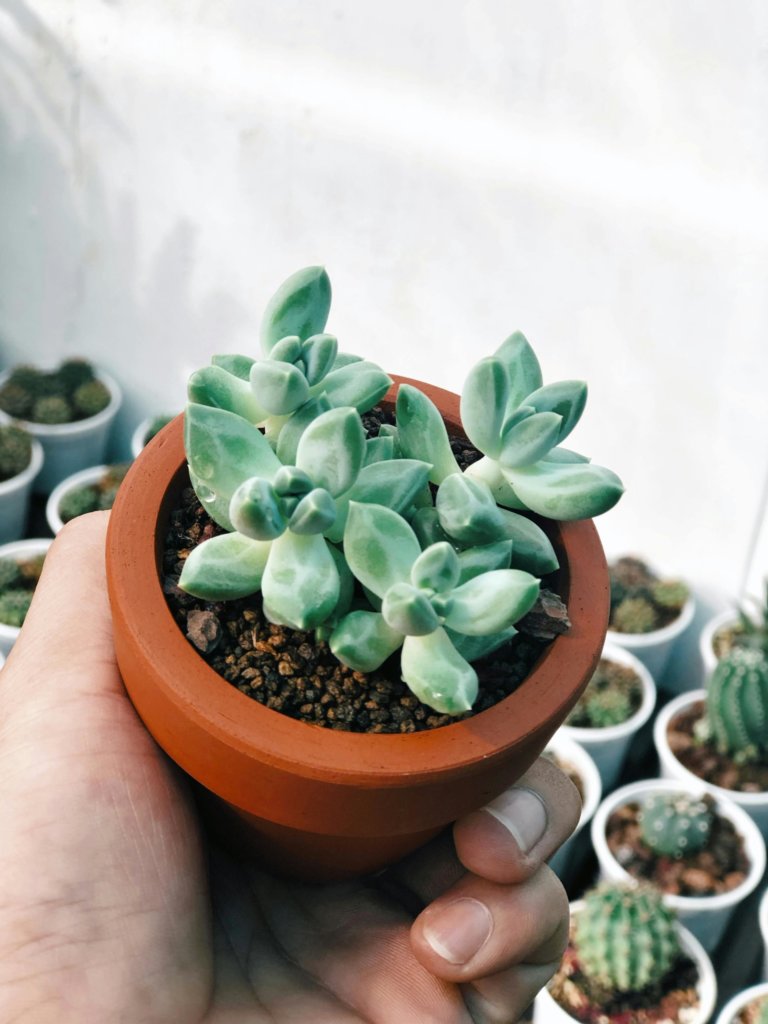
Terracotta pots are made from baked clay and are well-known for their porous nature. They allow air and moisture to pass through the walls, which helps prevent root rot when propagating succulents.
These pots usually have drainage holes, so excess water can escape easily. This is especially helpful for beginners who want more forgiving conditions.
Pros of terracotta:
- Excellent breathability
- Wick away extra moisture
- Warm, natural look
Cons:
- Breakable if dropped
- Dry out faster, which means more frequent watering
Pot sizes range from tiny to large, giving you flexibility for leaf cuttings or small offsets.
Ceramic Pots and Glazed Ceramic Pots
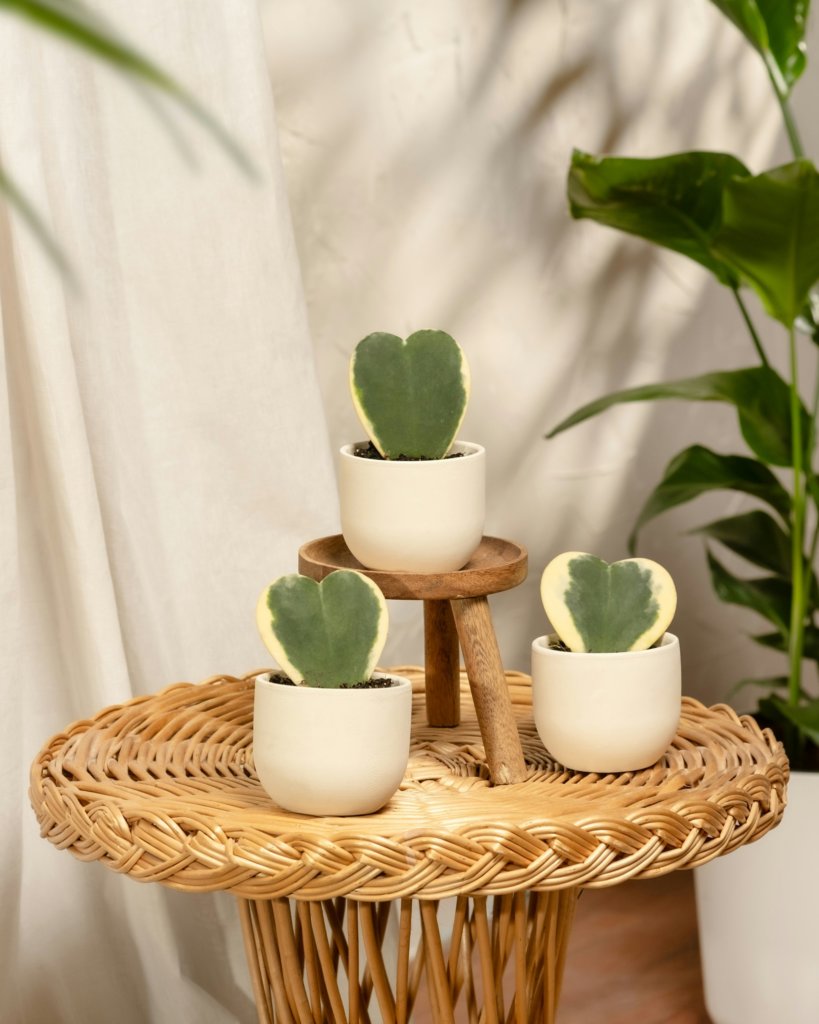
Ceramic pots offer a solid, heavy option for succulent propagation. They come in either unglazed or glazed finishes.
Unglazed ceramic pots act similarly to terracotta and allow some airflow, while glazed ceramic pots are less porous and retain moisture longer. This can be useful if you live in a hot, dry climate or tend to forget to water.
Glazed ceramic pots:
- Bright colors and styles available
- Hold moisture longer
- Can be heavy and not as breathable as terracotta
Many ceramic pots include adequate drainage holes. Always double-check drainage before planting, as root health depends on it.
Plastic Pots and Containers
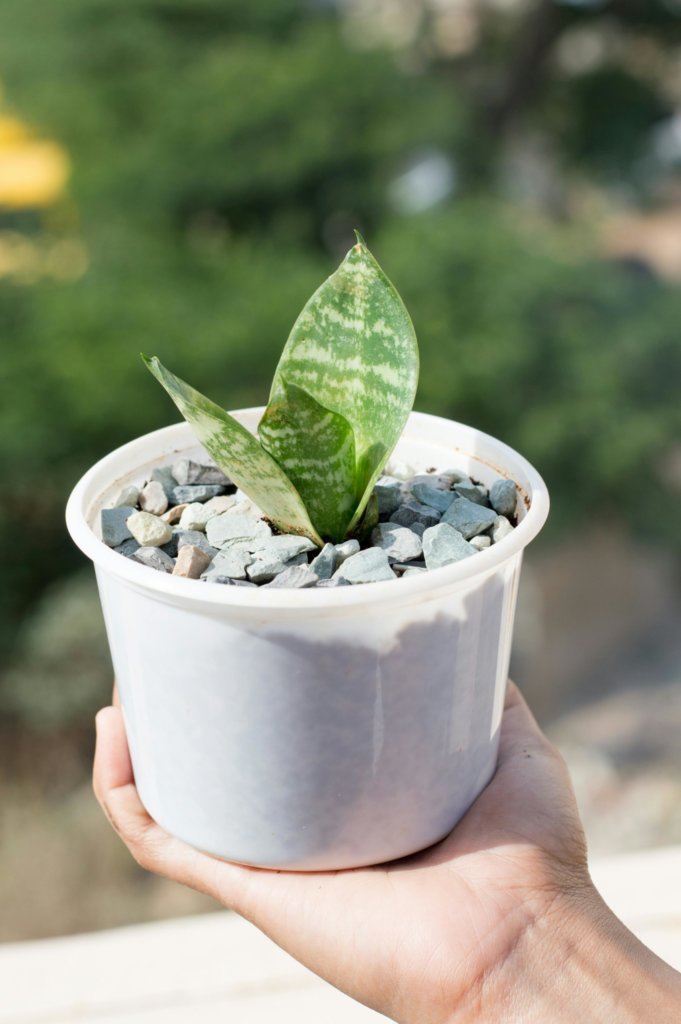
Plastic pots are lightweight, affordable, and come in many shapes and sizes. They don’t wick moisture away like clay or ceramic, so soil tends to stay wetter for a longer time.
If you use plastic containers, choose a size that matches your cutting or leaf, too much soil can mean too much water. Drainage holes are key for any plastic pot or tray to reduce the risk of rot.
Plastic containers are easy to clean and reuse, which may be helpful if you are propagating a larger number of succulents at once. For best results, use a well-draining succulent mix inside.
Wooden Planters and Wood Planters
Wooden planters, sometimes called wood planters, give a natural look that blends well with most homes. These containers are good for small propagation trays or shallow boxes meant for several cuttings.
Wood is less common than plastic or terracotta but can work well if you make sure it is not treated with chemicals. Make holes at the bottom so extra water can drain. Using a liner like landscape fabric can help reduce rotting and keep soil in place.
Wood can absorb some moisture but usually dries out quickly. Over time, it may degrade, especially if exposed to a lot of water, so check the planter often for signs of wear.

